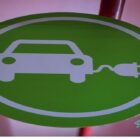With the world’s half population residing in cities and growing steadily at a fast pace, the need for a greener planet is felt. Countries from all continents have pledged to reduce carbon emissions. Moreover, developing countries like India have adopted policies to promote Electric Vehicle usage. By 2030, there are expected lakhs of fast chargers to meet the changing demands of an increasing number of EVs.
Increasing population and pollution
By 2050, cities across the globe are expected to witness significant population growth by around 66%. Indian population residing in cities by that time will touch around 60%. However, cities comprise just two percent of the world’s landmass. It is likely to leave behind an enormous footprint concerning climate impact. This will mean, about two-thirds of global energy will be consumed while emitting 70% of carbon dioxide.
Meeting mobility challenges
India is known for its expansive landscape, thus making mobility a major challenge. By 2030, the vehicle population is also expected to witness a significant surge from 160 million units to about 550 million. India relies heavily on crude oil imports. About 80% of oil is imported from other oil-producing countries, thus spending $235 million. The question is how to ensure basic life quality and sustainable living.
Protecting the environment
The other concern is global warming whose effects are already being felt on almost all continents. India’s energy security can be improved by considering vehicular electrification and adopting cleaner transportation methods. This can provide a sustainable progress path, reduce greenhouse gases as well as ensure a conducive environment. Plug-in hybrid and battery EVs are slowly, but steadily gaining prominence as a mode of transportation.
Need for charging infrastructure
The EV segment is projected to have decent growth. It facilitates the development of an accessible and consistent network of charging stations on streets and homes. Electric Vehicles are enjoying increased sales these days due to increasing awareness among the public about their benefits. Also, battery prices are becoming cheaper with the usage of advanced technology. More ev charging stations in India are needed.
Promoting infrastructure
Improved air quality and lower maintenance costs are what attract potential users to capitalize on its benefits. An increased number of EVs on roads, of all types, will mean an increase in the need for public charging stations. Hence, cities should lay the essential groundwork to make the place ‘EV ready’. This way, the challenges of meeting energy demands by increasing the number of EVs can be met.
Electrifying transportation modes
Developed nations have already started to support electrifying their transportation mode aggressively to counter carbon emissions. Taxis, carpools, and buses are all being electrified. The private sector has been investing in infrastructure development and public charging infrastructure. Parking facilities and commercial buildings are being roped in to support EVs. Favorable policies are desired to drive forward EV technology and battery.
Increasing global EV sales
When sales of EVs are concerned, China is projected as the leader. 2018’s first quarter saw EV sales touching 142,445 which is a sharp increase of 154% over 2017’s initial quarterly sales. On the other hand, a 48% increase in sales was witnessed in Norway from 35%. Even in the U.K., sales have increased to 11%.
Facilities offered
The above countries are reported to have offered preferential access to EVs to enable safe parking facilities. Also are offered access to toll roads, carpool lanes, and bus lanes. Several cities and countries suffering from air quality issues are stated to exercise greater control concerning access offered to EVs, thereby enabling better promotion.
Sales in India
India is projected to experience growth of 30% in 2 and 4-wheeler EV vehicles. This will mean these vehicles will require just 3 to 4 percent of the power generation that is used today. There might emerge additional requirements upon the available grids, for which concerns should be identified and sorted out.
Charging needs
Short-range vehicles such as personal cars need a stable power supply. Hence, they can be charged at the convenience of a home setting. There will be needed proactive planning and analysis to avoid network infrastructure-related issues. Policy changes introduced can help the country to save about 64% of road-based mobility energy demands. Also can be reduced 37% of carbon emissions.
Saving resources
To achieve and surpass the set goals by 2030, the government and private sectors alike have to pursue, a connected, shared, and electric mobility future. It can help reduce annual petrol and diesel consumption by approximately 156 million tonnes. If crude oil is purchased at $52/bbl, then net savings will be roughly around $60 billion (3.9 lakh crore) in 2030.
Researches
Studies conducted have revealed that about 4,900 DCFC (Direct-Current Fast Charging) stations will have to be installed in Indian cities. Only 400 DCFC stations will be desired in interstate corridors. To promote EV sales, seamless charging stations will have to be developed in cities. Indian Cities that have been trying to get the future ready to match the needs of increasing needs of EVs are Mumbai and Delhi.
Meeting Charging station requirements
There is a growing need to establish charging stations at different strategic locations spread across the city. It includes neighborhoods, highways, business hubs, and popular business hubs. Chargers installed here should monitor the charging status of the car’s battery as well as units consumed during charging. This can help boost EV sales considerably.
Future requirements
In the capital city Delhi, by 2030, there will be needed 300,000 fast chargers considering the increase in EVs by 30%. Taxis are likely to comprise around 12% and are expected to be the main users of these fast chargers. Hence, trying to match this increasing requirement will need an infrastructure investment of about $1 – $1.5 billion.
Consider the costs
With the low penetration of EVs in the country, investing in fast-charging infrastructure is found to be a costly affair. Besides meeting standard costs such as operating costs and fixed assets, driving range, battery cost, charger cost, and charging technology have a greater say on infrastructure expenses. EV penetration pace in the country can be increased by mixing the ‘push & pull’ strategy.
Supportive government
To ensure an increase in Electric Vehicle sales and promote charging stations, the government needs to adopt a supportive ecosystem. It should also establish stringent regulations considering carbon emissions. There should be boosted both AC and DC charging stations to accommodate all types of Electric Vehicles.



cafe elektirikli soba
I am truly thankful to the owner of this web site who has shared this fantastic piece of writing at at this place.
Gideon Kidd
You’re so awesome! I don’t believe I have read a single thing like that before. So great to find someone with some original thoughts on this topic. Really.. thank you for starting this up. This website is something that is needed on the internet, someone with a little originality!
Free Image Placeholder Generator
I do not even understand how I ended up here, but I assumed this publish used to be great